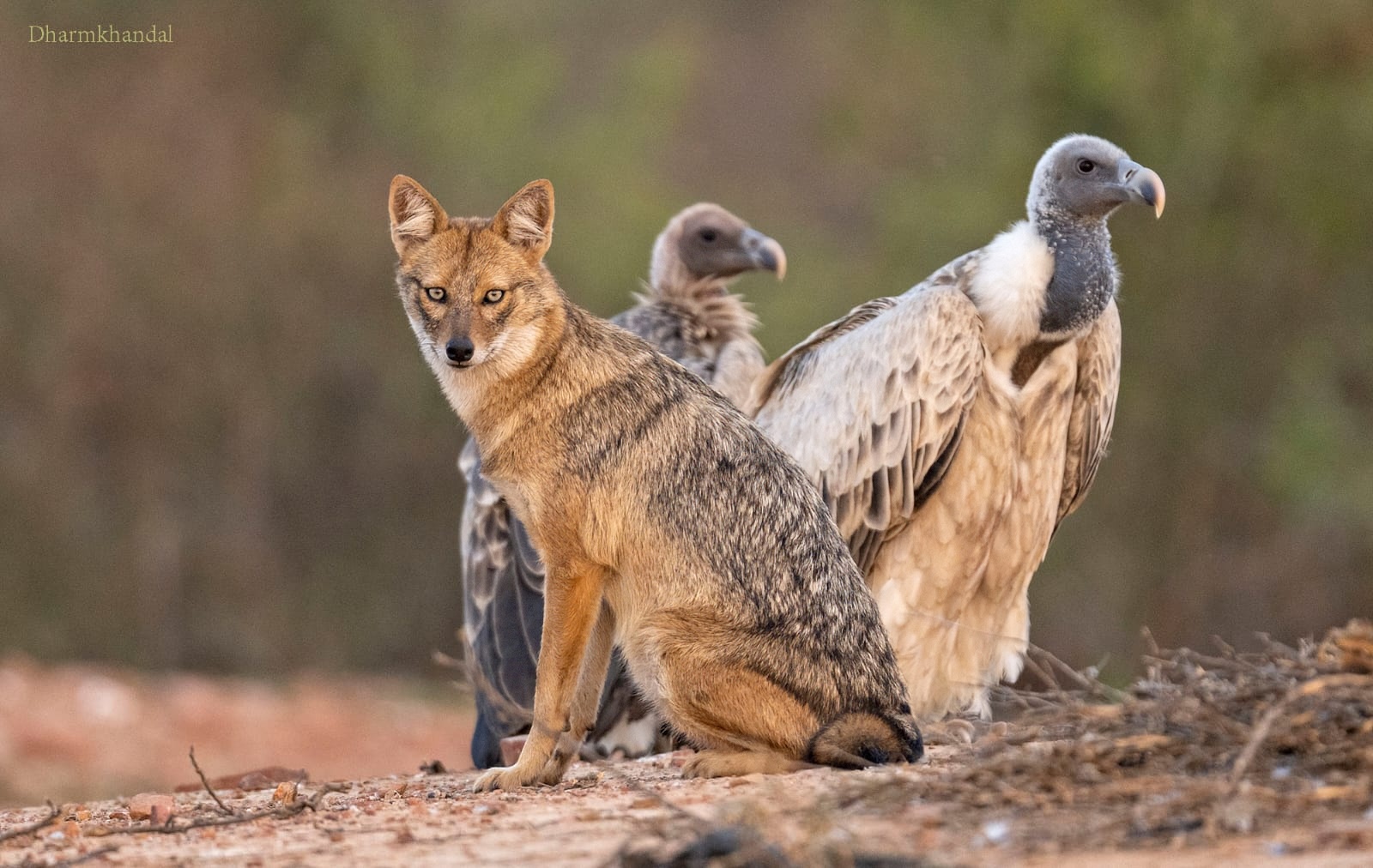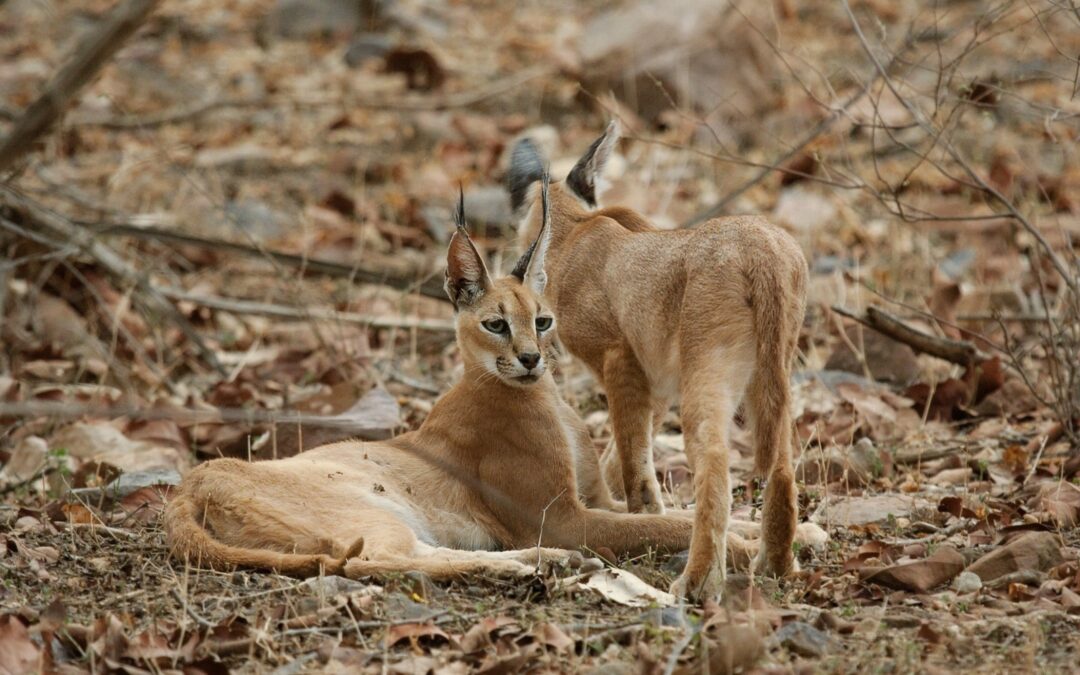The caracal population in the forests of Dholpur and Kailadevi appears to be more successful than in Ranthambhore National Park, and several factors may explain this difference. Two major factors stand out. First, there are relatively low numbers of apex predators like tigers and leopards in Dholpur and Kailadevi compared to their higher prevalence in Ranthambhore. Second, while Ranthambhore is dominated by dense, pure stands of Dhok (Anogeissus pendula) trees, the forests of Dholpur and Kailadevi are less dense in many areas, offering a more diverse habitat. Human impact in Dholpur and Kailadevi is moderate to high, but not severe enough to completely degrade large portions of the forests, nor so minimal as to allow tigers, leopards, or Dhok trees to dominate the landscape.
Leopards are believed to compete with caracals, and their lower density in the area may help increase caracal numbers. Additionally, the prey species on which caracals rely — such as hares, rodents, and birds like peafowls, partridges, and doves—are less abundant in the pure stands of Dhok trees compared to more open, shrub-dominated forests with greater grassland coverage. The latter provides a more diverse and abundant prey base for caracals.

Family time: A Indian fox mother tends to her young cubs.
This balance aligns closely with the Intermediate Disturbance Hypothesis, a concept first introduced by renowned ecologist Joseph H. Connell. His work primarily focused on species interactions —such as competition and predation—and their roles in shaping ecological communities. Connell’s ability to link theoretical models with empirical field studies made his ideas highly influential and broadly applicable.
Connell’s Intermediate Disturbance Hypothesis emerged from his observations of coral reef ecosystems in tropical waters. He noticed that areas with moderate disturbances, such as occasional storms, exhibited greater species diversity than regions with either low or high disturbance levels. In minimally disturbed areas, dominant species often outcompeted others, leading to reduced diversity. Conversely, in highly disturbed areas, only a few resilient species managed to survive. His studies of tropical rainforests revealed a similar pattern: disturbances like treefalls created light gaps that allowed both fast-growing pioneer species and shade-tolerant plants to coexist. Connell proposed that moderate disturbances disrupt competitive exclusion, enabling subordinate species to thrive without displacing dominant ones entirely.

Watchful eyes: A moment of peaceful coexistence in the wild.
This hypothesis helps explain how the relatively low density of tigers and leopards in Dholpur and Kailadevi may contribute to the thriving caracal populations in these areas. Unlike Ranthambhore, where the dense and homogeneous Dhok tree forests dominate, the forests of Dholpur and Kailadevi are more open and diverse, with a greater variety of prey. This diversity is, in part, a result of ongoing human activities such as tree-cutting and grazing. It seems that leopards may compete with caracals for resources, and less diverse forests offer fewer opportunities for the caracals’ prey to thrive. This suggests that moderate human activity can sometimes help create open spaces within forests, fostering a broader range of species and supporting greater biodiversity.
Interestingly, historical accounts reveal that species like pangolins, hyenas, wolves, Jackals, foxes and vultures were once abundant in Ranthambhore but have dwindled over time. This decline coincided with the relocation of local communities, leading to significant landscape changes. Open areas transformed into dense dhok forests, and grazing was almost entirely prohibited. Paradoxically, species such as wolves, hyenas, pangolins, Jackals, foxes vultures and caracals were frequently sighted immediately following the village relocations but have since disappeared from the core park. Today, Ranthambhore is dominated by freely roaming tigers and leopards, which were less commonly seen in earlier times.

Wild and free: In the heart of the wilderness, these striped wonders roam.
The aim of this discussion is not to advocate for unregulated human activities in protected areas but to underscore the need for thoughtfully defining and managing such activities. Striking a balance can support biodiversity more effectively than blanket prohibitions.
Although Dholpur and Kailadevi (often referred to as the Karauli forests) have been classified as stringent Tiger Reserves, the reality on the ground differs. These forests remain more accommodating to activities like grazing and wood-cutting compared to Ranthambhore. While some conservationists argue for stricter protection akin to Ranthambhore, this may not always benefit all species. In fact, overly restrictive conservation measures may inadvertently harm ecological balance by excluding species that thrive under moderate disturbances.

A watchful pair: Two Indian wolves stand tall in the rain.
Instead, a balanced approach that integrates moderate human activity could prove more beneficial for supporting biodiversity in such regions. For instance, activities like controlled grazing and selective logging could maintain the kind of habitat structure that benefits a variety of species, including caracals.

Nature’s balance: A predator and scavengers face off in the wilderness.
A noted forest officer Arijit Banerjee concurred with these observations and recalled several similar examples. He cited instances such as grazing in areas inhabited by the Great Indian Bustard and in Keoladeo National Park, emphasizing how moderate human activities have historically influenced biodiversity in these ecosystems.
Lastly, it is crucial to remain open to alternative explanations. Treating the Intermediate Disturbance Hypothesis as an absolute truth could be misleading, as other factors may also contribute to the survival of species like the caracal. Only by embracing a scientific mindset and remaining open to exploration can we uncover the true dynamics governing these ecosystems.
Pictures By: Dr Dharmendra Khandal


A very interesting article. We are never too old to learn. March 25 I would very much like to visit these areas. Many thanks Dharmendra
Very informative but i agree grassland patches after village relocation need to be maintained not let it become dense